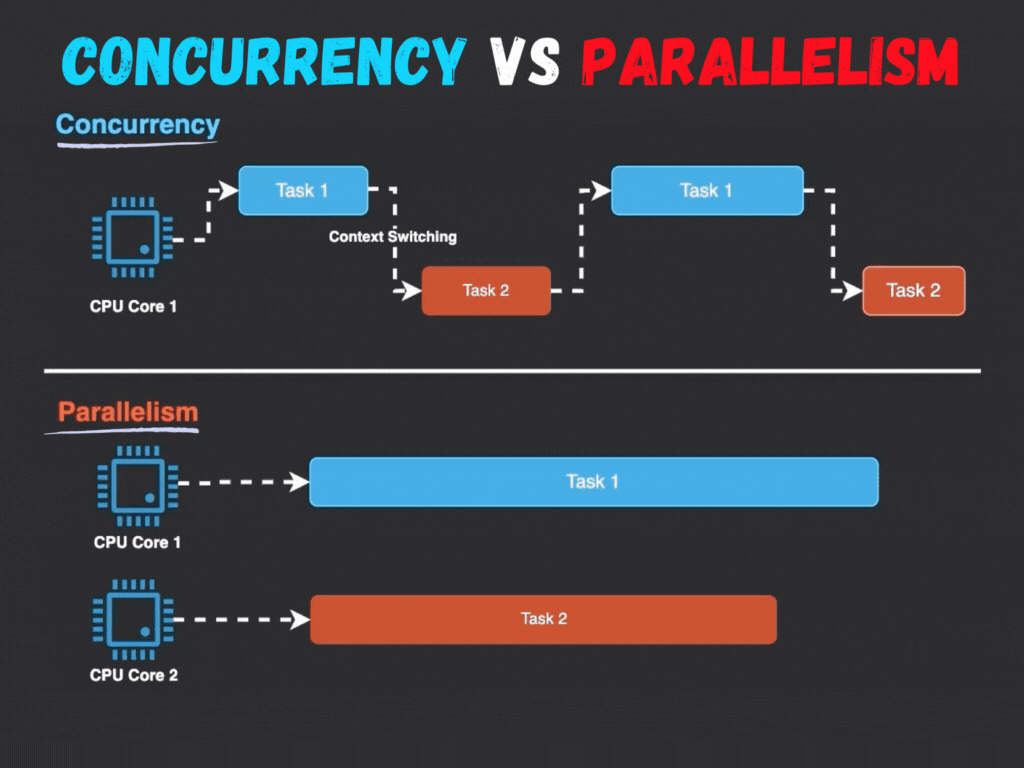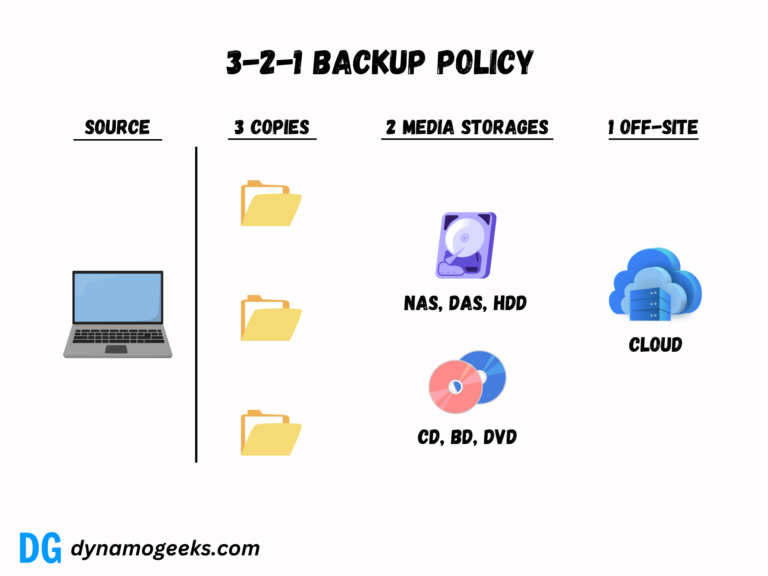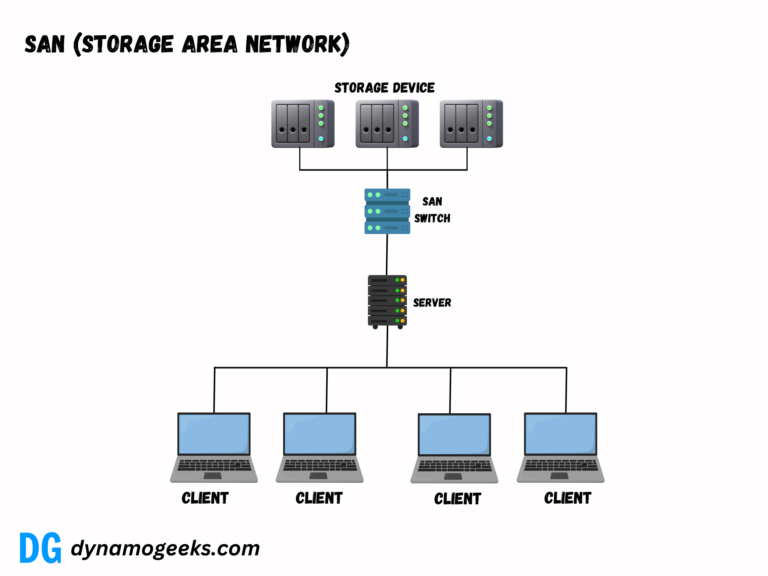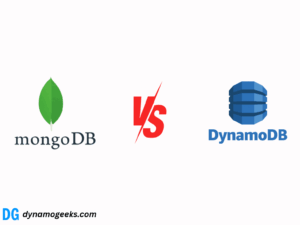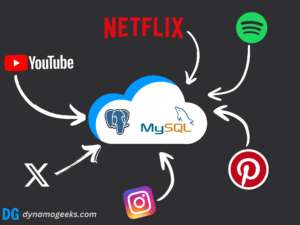Concurrency vs Parallelism
Understanding the difference between concurrency and parallelism is crucial for anyone involved in programming or software development. These concepts are fundamental in optimizing applications to perform more efficiently and handle multiple tasks simultaneously. In this blog post, we’ll break down these technical terms into simple explanations, helping you grasp when and how to use them effectively.
What is Concurrency?
Concurrency refers to a program’s ability to manage multiple tasks simultaneously. This doesn’t mean the tasks are performed simultaneously, but rather that the system handles them to make them appear to run in tandem. This is achieved by rapidly switching between tasks, using techniques such as threading and multitasking. The key aspect of concurrency is the system’s ability to handle many tasks at once, creating the illusion of simultaneous execution, even though the tasks are being managed sequentially.
Concurrency is about dealing with lots of things at once. It’s more about the structure of the system and how it handles multiple tasks within a single CPU.
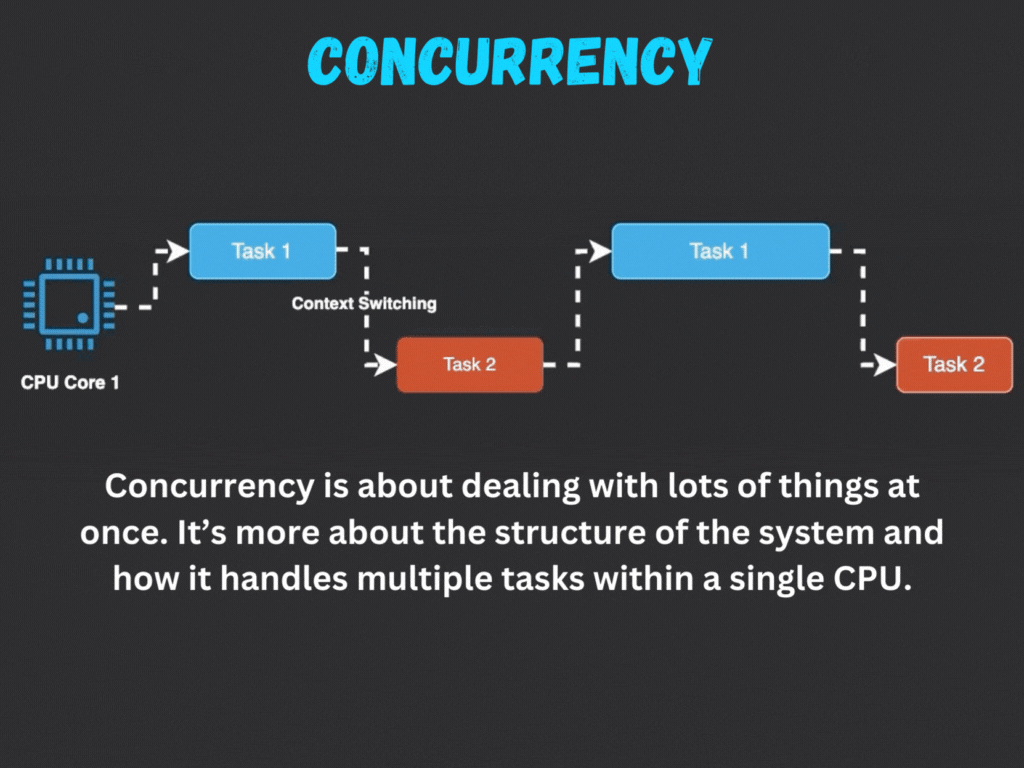
Characteristics of Concurrency:
- Task Switching: Concurrency often employs mechanisms like threading and asynchronous programming to switch contexts between different tasks. This enables a single CPU to handle multiple operations by dividing its time among them.
- Focus on Resource Sharing: Concurrency must manage the shared use of resources like memory and data variables without conflicts, often requiring sophisticated synchronization techniques.
- Applicable in Single or Multiple Cores: While concurrency can benefit from multiple cores by delegating separate threads or tasks to different cores, it can also be implemented within a single core by interleaving execution steps of different tasks.
What is Parallelism?
Parallelism, on the other hand, is about performing multiple operations simultaneously. This requires hardware with multiple processing units. In parallel computing, tasks are divided into smaller sub-tasks that are processed concurrently in different processors. It’s like having several different workers on an assembly line, each one doing a part of the job at the same time.
Parallelism is about doing lots of things at once. This is more about the execution, involving multiple CPUs to handle different tasks simultaneously.
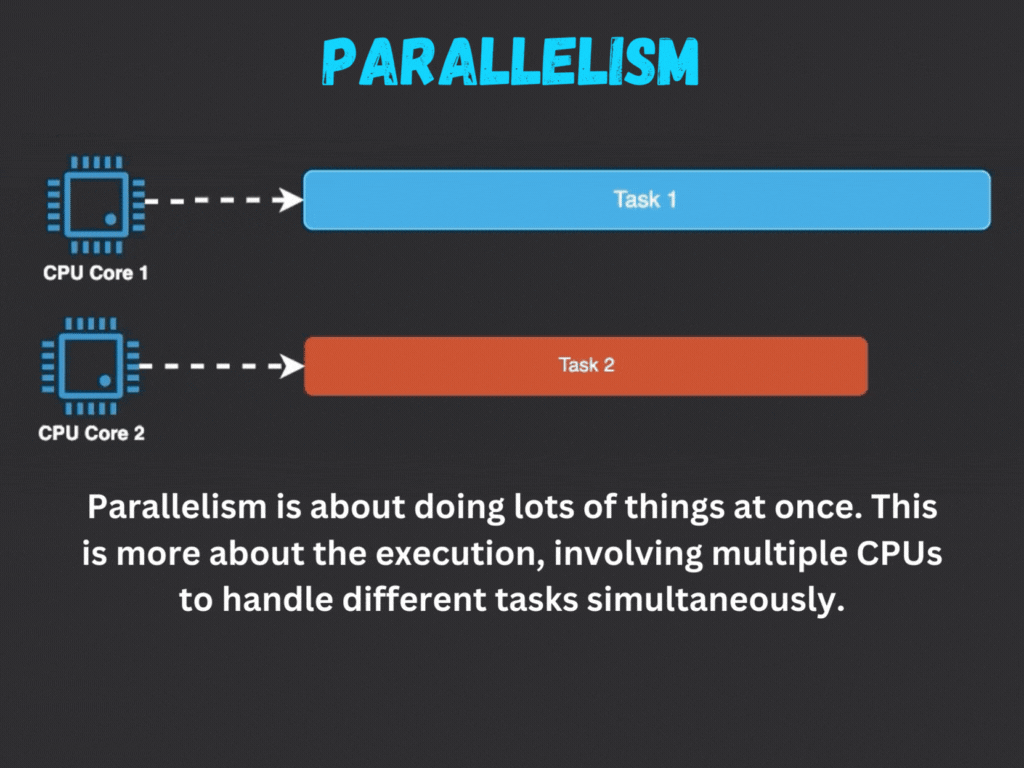
Characteristics of Parallelism:
- Simultaneous Processing: Parallelism involves multiple processes running at the same time on different processing units, which dramatically speeds up execution, especially in computational tasks that can be divided into independent subtasks.
- Focus on Performance Efficiency: By distributing tasks across multiple cores, parallelism seeks to minimize the completion time for a set of operations, making it ideal for high-performance computing tasks.
- Requires Multi-Core Architecture: Unlike concurrency, which can be implemented on a single processor, parallelism requires multiple processing units to achieve true simultaneous execution.
When to Use Concurrency or Parallelism
The choice between concurrency and parallelism depends on the problem you are trying to solve and the resources available. Here’s a simple guideline:
- Use concurrency when you need to handle many tasks that don’t necessarily have to be done at the same instant but need to appear as if they are (e.g., handling UI and backend server requests).
- Use parallelism when tasks can be performed independently and can truly run simultaneously, which speeds up the computation (e.g., large data processing or real-time calculations).
Real-World Applications
- Concurrency in Web Servers: Concurrency is crucial in web servers to handle multiple client requests. Each client interaction is dealt with independently without waiting for others to complete, enhancing the user experience.
- Parallelism in Scientific Computing: Scientific applications, such as climate modelling or molecular dynamics, use parallel computing to perform complex calculations faster and more efficiently.
Challenges in Concurrency
Concurrency, which involves managing multiple tasks within a single system, presents several unique challenges that can complicate application development and performance:
1. Deadlocks and Livelocks
A common issue in concurrent programming is deadlocks, where two or more processes hold resources and wait for the other to release them, thus halting progress indefinitely. Livelocks are similar but involve processes continually changing their state in response to each other without making progress.
2. Race Conditions
Race conditions occur when the behavior and outcome of software depend on the sequence and timing of uncontrollable events, like thread execution. This can lead to unpredictable results if not managed correctly, as multiple threads access and modify data concurrently without proper synchronization.
3. Difficulty in Testing and Debugging
Concurrency introduces complexity in testing because the interplay between concurrent components can produce intermittent and non-deterministic bugs. These bugs are often hard to reproduce and fix because they may not surface in a single-threaded test environment.
4. Resource Starvation
In concurrent systems, resource starvation happens when one or more threads are perpetually denied necessary resources because other threads are consuming them. This situation leads to poor performance as not all parts of the program can execute efficiently.
5. Complexity of Design and Maintenance
Designing and maintaining concurrent systems requires a deep understanding of thread management and synchronization. Developers must carefully design their software architecture to handle concurrent operations safely and efficiently, which can significantly increase the complexity of the project.
Challenges in Parallelism
Parallelism involves executing multiple operations at the same time, typically across multiple processors or cores, and also comes with its set of challenges:
1. Scalability Limits
One of the primary concerns in parallel computing is scalability. Amdahl’s Law points out that adding more processing units will have diminishing returns due to the sequential fraction of a task that cannot be parallelized. This makes it challenging to achieve linear scalability in performance with the addition of more hardware resources.
2. Overhead of Synchronization
3. Load Balancing
Effectively distributing tasks across multiple processors is critical in parallel computing. Poor load balancing can leave some processors idle while others are overloaded, leading to inefficient resource utilization and longer overall processing times.
4. Debugging Difficulties
Parallel programs are harder to debug than their sequential counterparts due to their non-deterministic nature. Bugs may only appear under specific conditions and disappear under others, making them elusive and challenging to resolve.
Harnessing the Power of Concurrency and Parallelism
Understanding and applying concurrency and parallelism effectively can significantly enhance the performance and responsiveness of your applications. By choosing the right approach based on your needs, you can make your software faster, more efficient, and capable of handling multiple tasks smoothly.
This post aimed to demystify these concepts and provide you with a clear understanding of their differences, applications, and challenges. Whether you’re a seasoned developer or just starting out, mastering these concepts is key to building sophisticated, high-performance software.
By keeping these explanations simple and practical, we hope to have made these powerful programming paradigms more accessible and understandable.
Happy coding!

